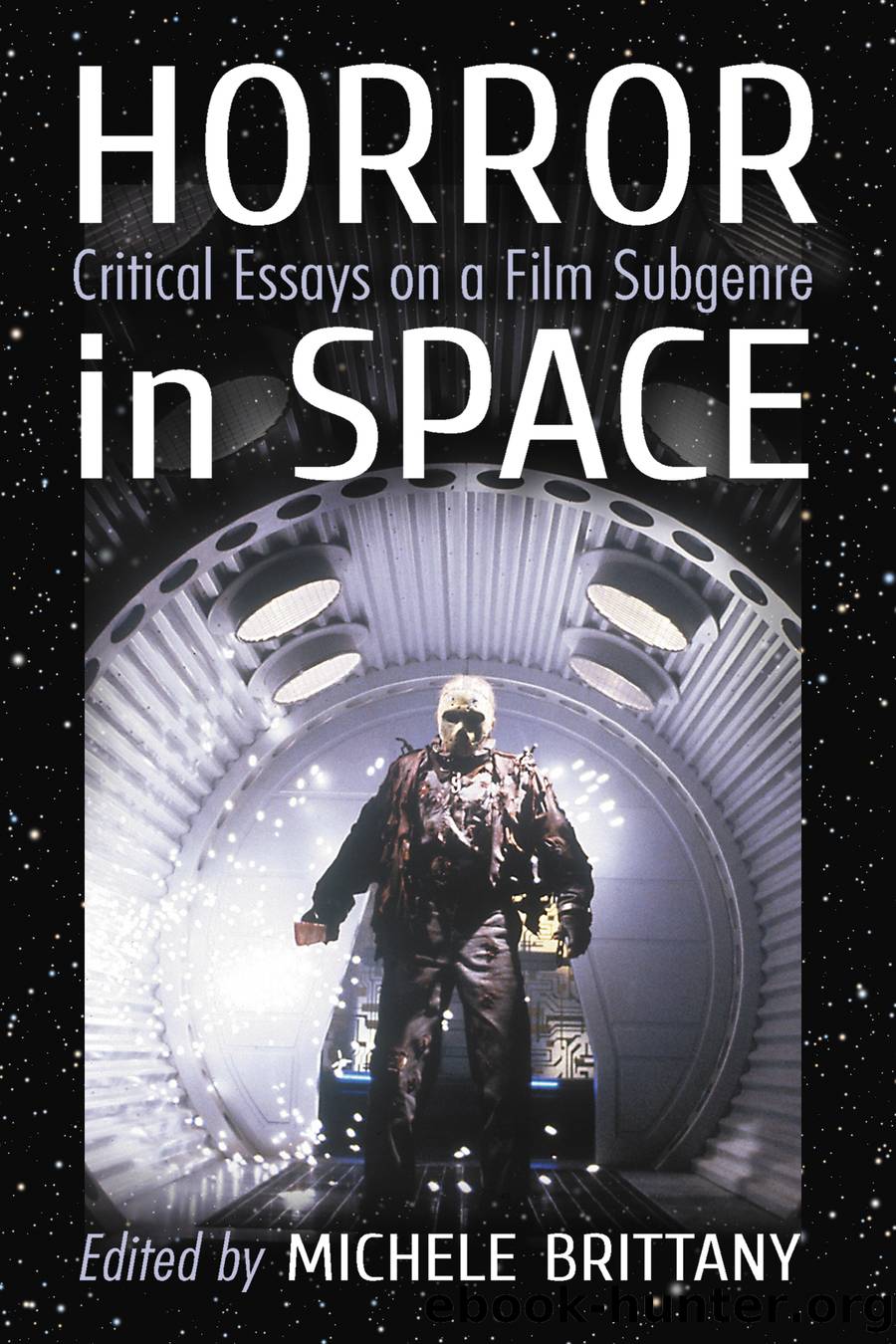Horror in Space: Critical Essays on a Film Subgenre by Michele Brittany

Author:Michele Brittany
Language: eng
Format: epub
Publisher: McFarland & Company, Inc., Publishers
Published: 2017-10-12T00:00:00+00:00
A Romantic Moon
At numerous junctures, the plot of Moon hangs on the question of which Bell, of all the possible Bells, is the Bell that has been associated with previous scenes and sequences. The viewer finds him or herself considering the likelihood of apparent inconsistencies and outrageous coincidental interactions, only to, in the final moments, come to understand that the reported sequence of events is indeed perfectly logical. The Bells form a collective perspective, and the viewerâs enjoyment of the film arises, in part, from his or her ability to parse that perspective into its constituent elements. From this, then, it is reasonable to argue that Moon is very much a film about the intersection of perspective and identity. As such, it can be generally associated with the ancient tradition of what Northrop Frye calls the sentimental romance.2 However, in terms of the subject at handâspace horrorâthe value of this association exceeds the themes of perspective and identity because, according to Frye, the sentimental romance has a particular set of practices for staging the experience of horrorâin space or anywhere. A consideration of these practices can inform a viewing of Moon. In particular, it can illuminate just what it is that is so scary about this tale. As we shall see, the real horror in Moon can be understood as the revelation of a botched romantic reunion, one in which our hero, Sam Bell, races into the arms of a supposedly loving world, one thatâtragicallyâhas transformed into a post-humanist wasteland in his absence.
Fryeâs argument extends from a particular conception of literatureâwhat it is, where it comes from, and how it is expressed in societies. He argues that every human society has a âverbal culture, in which fictions or stories have a prominent place.â3 He identifies the fictions that are most important to a society as myths, and the stories of marginal significance as folk tales. While these categories may have distinct social values, Frye contends that they are often essentially similar in their organization. One contrast he provides to understand these categorical distinctions is between the Bible in the Western tradition and the science fiction serials of the mid 1950s: these are subjects with vastly dissimilar levels of cultural authority, even though they depend on certain common narrative features. He explores these connections under the notion that there are only four narrative movements in myth or folktale, and that they relate to movements between the realms of heaven, earth, and an under or night world. He writes, âAll stories in literature are complications of, or metaphorical derivations from, these four narrative radicals.â4 He then notes that in the case of myths and folktales that regardless of their cultural authority they share a common concern with impossible people, places, or thingsâwhich he calls âanti-representationalâ subjects5 because their very nature defies literal representation. Moreover, he notes that, in myths and stories alike, these subjects progress through their worlds under coincidental, rather than strictly cause and effect, encounters. For Frye, the persistence of
Download
This site does not store any files on its server. We only index and link to content provided by other sites. Please contact the content providers to delete copyright contents if any and email us, we'll remove relevant links or contents immediately.
Naked as Nature Intended by Pamela Green(415)
The Filmmaker's Guide to Creatively Embracing Limitations: Not Getting What You Want Leading to Creating What You Need (for True Epub) by Pace William & Stobbe Ingrid(412)
30 Movies to Get You Through the Holidays by Roger Ebert(388)
Bond, James Bond by Brad Gilmore(351)
It's Only a Movie! by Haberski Jr. Raymond J(319)
Chinese films in focus II by Unknown(279)
How To Write A Novel The Easy Way Using The Pulp Fiction Method To Write Better Novels: Writing Skills by Jim Driver(266)
The Fellowship of the Knits: Lord of the Rings: The Unofficial Knitting Book by Tanis Gray(264)
Smartphone Cinema: Making Great Films with Your Mobile Phone by Bart Weiss(264)
Film Truth; November, 1920 by Anonymous(259)
Charles McGraw by Alan K. Rode(255)
The Greatest Show on Earth by Jerry Pinto(253)
Thomas Mann and Friedrich Nietzsche: Eroticism, Death, Music, and Laughter by Caroline Joan Picart(230)
Jafar Panahi: Interviews by Unknown(229)
The Garden in the Machine by Unknown(229)
The Reel Truth by Reed Martin(229)
Jurassic Park and Philosophy by Watkins Jessica Michaud Nicolas(224)
The Japanese Cinema Book by Hideaki Fujiki & Alastair Phillips(219)
Euro-Visions: Europe in Contemporary Cinema by Mariana Liz(215)
